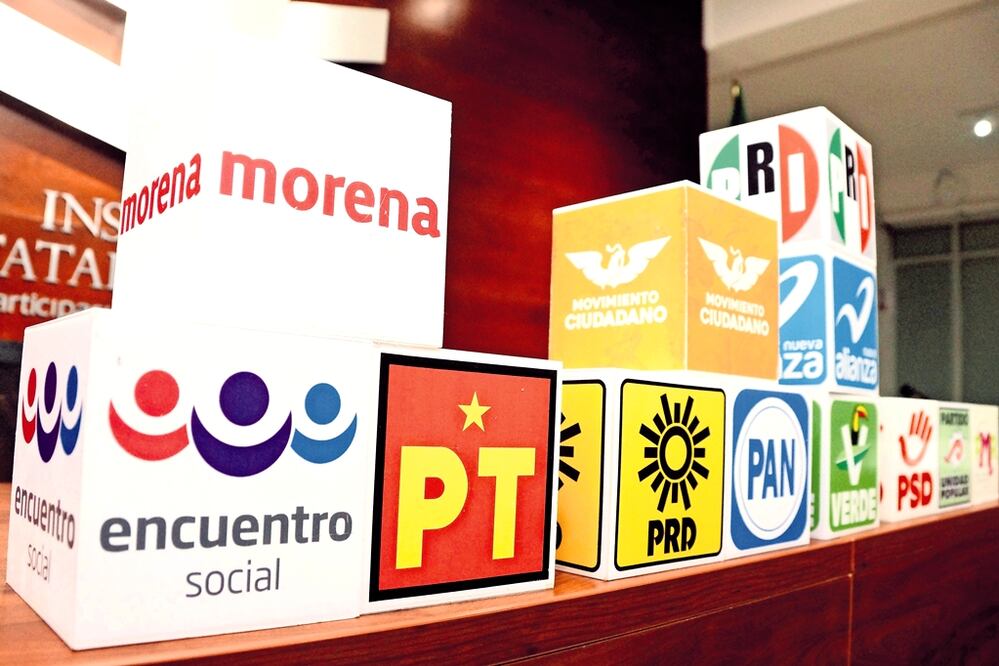Más Información

Sheinbaum visita Parque Ecológico Lago de Texcoco; "es ahora un área natural protegida y no un aeropuerto inviable", afirma

INAH reprende a Bad Bunny tras tocar pieza en el Museo de Antropología; el músico retiró la mano, afirma

Hallan muerta a mexicana que viajó a Colombia con su pareja para celebrar su aniversario, esto se sabe
For the first time in our democratic history, all political parties in Mexico with a federal registration before the National Electoral Institute (INE) have decided to join forces and integrate electoral coalitions .
But why should citizens care about who has decided to team up with whom? Aren't coalitions just a good way to share funds and TV and radio times? Well yes, those are certainly some of the benefits of electoral coalitions but not the main ones, given that coalitions agree to share something else – candidacies . And for all the Mexican citizens planning on casting their vote this July 1st , it might be important to know who, exactly, they are voting for.
There are three major coalitions registered for the upcoming 2018 General Election :
(All For Mexico)
| Institutional Revolutionary Party | Green Party | New Alliance Party |
| (PRI) | (PVEM) | (PANAL) |
(Coalition for Mexico to the Front)
| National Action Party | Democratic Revolution Party | Citizen's Movement Party |
| (PAN) | (PRD) | (MC) |
(Together We’ll Make History)
| National Regeneration Party | Labor Party | Social Encounter Party |
| (MORENA) | (PT) | (PES) |
According to Mexican laws, political parties are able to form coalitions for Presidential elections and Federal Congress elections pursuant to the principle of proportional representation and the principle of relative majority .
The principle of proportional representation states that federal offices up for election will be assigned based on the percentage of votes obtained by a political party within a geographic region. Meanwhile, the principle of relative majority establishes the candidates obtaining the most number of votes will be assigned to the federal office they were running for.
Moreover, Mexican laws allow to specify the number of shared candidacies an electoral coalition can have according to three simple schemes:
Flexible: At least 25% of candidacies registered by the coalition.
Partial: At least 50% of candidacies registered by the coalition.
Full: All candidacies are registered by the coalition.
What does this mean? That all the parties of a coalition agree on a specific number of candidacies shared among all its members. And this means they also agree on the number of public offices each political party gets to keep – and which – should the coalition triumph on election day.
Confused? Yes, it’s downright confusing for the electorate because it’s not easy to know whom you will be giving your vote to when election day comes. All current coalitions are partial and many have agreed to have a certain number of Congress seats assigned according to the principle of relative majority, and some pursuant to the one of proportional representation.
Okay, okay. Let’s try and explain this better. Let’s say Jon Doe is running for Senator and is a member of party Y. Party Y is an electoral coalition with parties W and X. You vote for John Doe, believing you're also casting your vote for party Y. However, depending on the coalition agreement, Senator John Doe can end up becoming a member of party W if the coalition wins the elections.
So who gets to keep what?
You can check the coalition agreements at the INE's official website in Spanish by clicking on the tab “Convenio Integrado” (Comprehensive Agreement) of each coalition to find out how the following federal offices have been distributed among the parties.
am
Noticias según tus intereses
[Publicidad]
[Publicidad]











